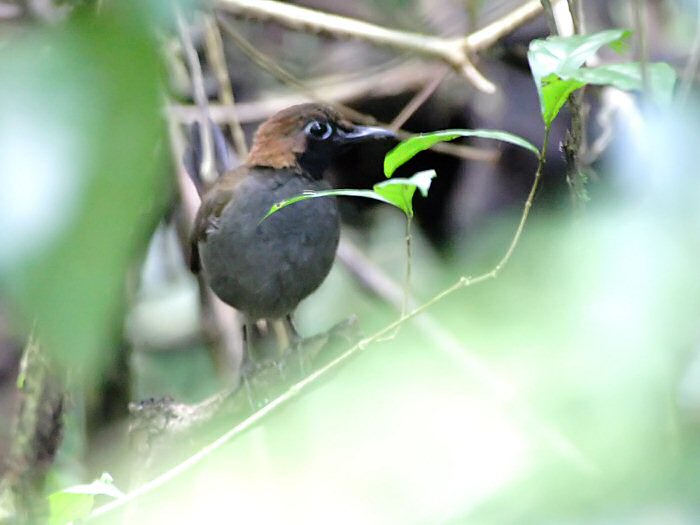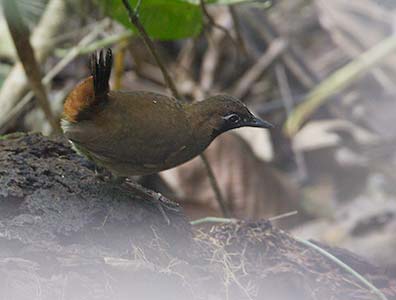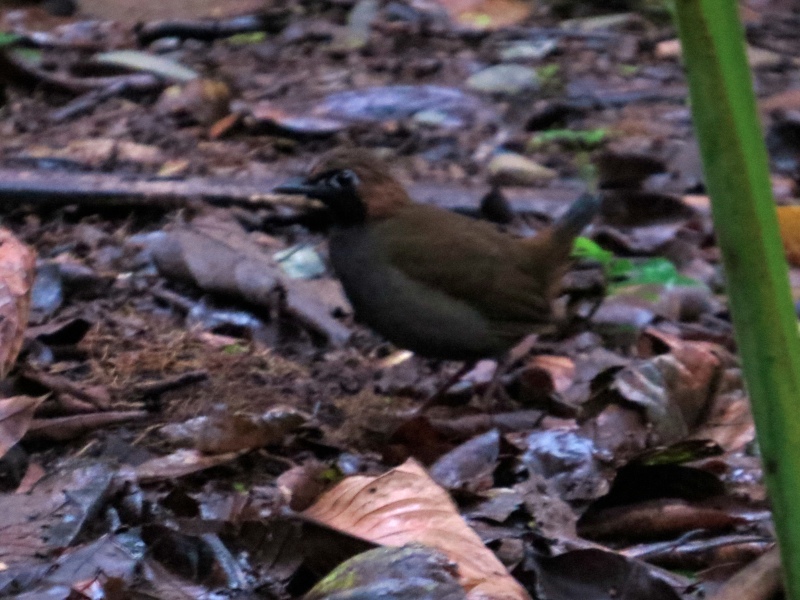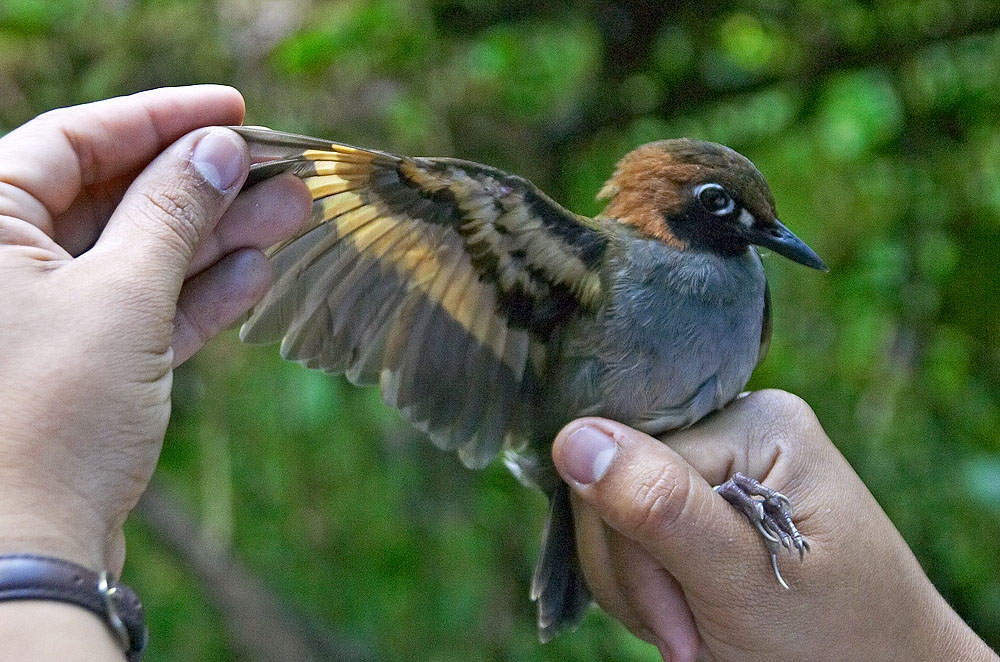
Formicarius analis
TAXONOMY
Formicarius analis d’Orbigny & Lafresnaye, 1837.
OTHER COMMON NAMES
French: Tйtйma coq-de-bois; German: Schwarzkehl-
Ameisendrossel; Spanish: Chululъ Enmascarado.
PHYSICAL CHARACTERISTICS
7 in (17–18 cm), with a black iris and white eye-ring, and short
tail held erect.
DISTRIBUTION
Amazonian region of northern South America and in tropical
Central America; from tropical southern Mexico, through appropriate
habitats in Guatemala, Honduras, Nicaragua, Costa
Rica, Panama, coastal Venezuela, the Guyanas, northern and
central Colombia, eastern Ecuador, eastern Peru, northern Bolivia,
and widely in Amazonian Brazil.
HABITAT
Below 3,300 ft (1,000 m) in extremely dense undergrowth vegetation
of humid tropical forest and mature secondary woodland.
BEHAVIOR
Nonmigratory pairs defend a breeding territory. May forage
near swarms of army ants. Song of males is a series of up to 10
fading notes.
FEEDING ECOLOGY AND DIET
Glean insects and other arthropods from foliage in dense vegetation
close to the ground.
REPRODUCTIVE BIOLOGY
Monogamous pairs bond for life, typically lay two eggs, and
share incubation and care of nestlings and fledglings.
CONSERVATION STATUS
Not threatened. Widespread and relatively abundant.
SIGNIFICANCE TO HUMANS
No direct significance, except for the indirect economic benefits
of bird-watching and ecotourism.
Other popular Animals
Photo Gallery of - Black-faced antthrush




 Animalia Life
Animalia Life